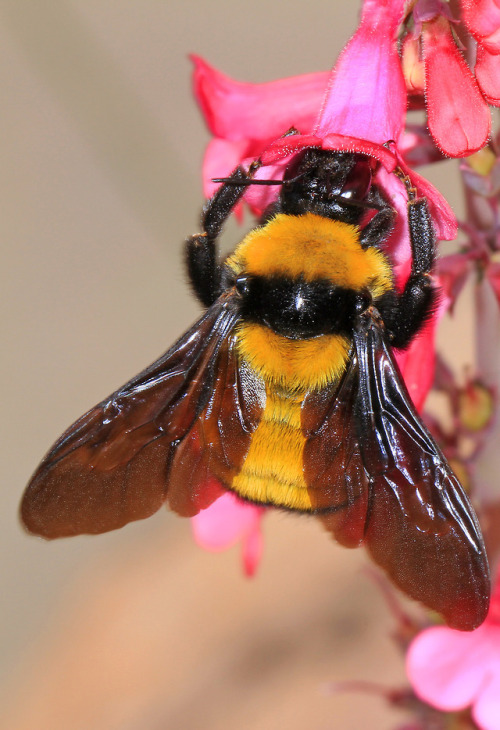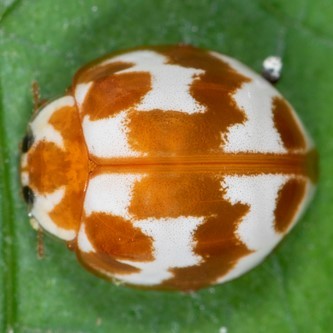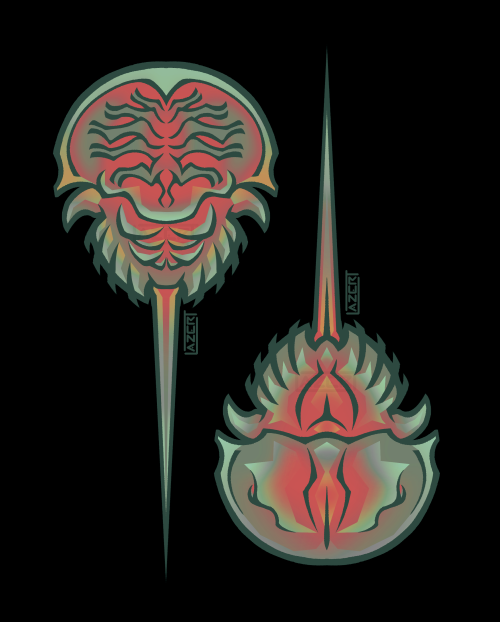Your gateway to endless inspiration
Arthropod - Blog Posts
Moth Of The Day #106
Urania Swallowtail Moth / Green Page Moth
Urania fulgens
From the uraniidae family. They have a wingspan of 70-85 mm. They tend to inhabit tropical environments. It is found in Central and South America.





Hummingbird Clearwing Moth, Hemaris thysbe, family Sphingidae, East Fork State Park, southern Ohio, USA
photographs by Gayle Pille




enjoying the variation in these handsome Graphocephala versuta, including the last poor hopper who has a mite sucking on its head
Moth Of The Day #107
Chinese Character
Cilix glaucata
From the drepanidae family. They have a wingspan of 18-26 mm. They tend to inhabit hedgerows, scrub and open woodland as well as gardens. They can be found in Europe, Asia Minor and North Africa.





Prancing Peacock Spiders
Maratus volans is perhaps the most widely known member of the genus Maratus, also known as peacock spiders– part of the jumping spider family– which contains 108 recognised species. Maratus volans is common across Australia and the island of Tasmania, and occur in a variety of habitats. They are most commonly found among leaf litter and dry vegetation, especially in dunes, grasslands, and sparse deciduous forests.
Peacock spiders like M. volans are extraordinarily small; both sexes only reach about 5 mm (0.19 in) in length. Members of the Maratus genus are famous for the male’s coloration, and M. volans is no exception; the abdomen is covered in brightly colored microscopic scales or modified hair which they can unfold for mating displays. Some males can also change the color of their scales, and the hairs can reflect both visible and ultraviolet light. Female M. volans lack this distinctive coloration, and are a drab grayish brown.
Reproduction for M. volans occurs in the spring, from August to December. During this period, males will approach females and raise their patterned abdomens and third pair of legs for display. He then approaches, vibrating the fan-like tail, and dances from side to side. If a female is receptive, he then mounts her; if not, she may attempt to attack and feed on him. This may also occur post-copulation. In December, the female creates a nest in a warm hollow in the ground where she lays her eggs. Each cluch contains between 6 and 15 eggs, though females typically lay several clutches. Male M. volans hatch the following August, while females typically hatch in September. Both sexes mature quickly and typically only live about a year.
Like other jumping spiders, peacock spiders like M. volans do not weave webs. Instead, they hunt during the day time using their highly developed eyesight. These spiders are also able to jump over 40 times their body length, which allows them to pounce on unsuspecting prey like flies, moths, ants, crickets, and other, much larger spiders. Other spiders are also common predators of M. volans, as well as wasps, birds, frogs, and lizards.
Conservation status: None of the Maratus species have been evaluated by the IUCN. However, it is generally accepted that they are threatened by habitat destruction, like many other insects.
If you like what I do, consider leaving a tip or buying me a ko-fi!
Photos
Jurgen Otto 2 & 3

Range: Costa Rica, Panama, & Colombia.

Rainbow Scarab (Phanaeus vindex), male, family Scarabaeidae, Pennsylvania, USA
a species of "true dung beetle".
photograph by Michael Reed



Spiky Leaf Beetle, Hispellinus sp., family Chrysomelidae, Keelung, Taiwan
photograph by Adeline Goh



Hummingbird moth time of year!
Snowberry Clearwing (Hemaris diffinis)
July 11, 2023
John Heinz National Wildlife Refuge, Tinicum, Pennsylvania
Moth Of The Day #112
Clouded Silver
Lomographa temerata
From the geometridae family. They have a wingspan of 22-30 mm. They tend to inhabit gardens, hedgerows, fens and woodland. They can be found in most of Europe.


“I could never be an entomologist. bugs creep me out” sucks to suck because I’m a real-life pokemon trainer. like look at these and tell me they’re not pokemon








like are you serious. have fun doing whatever you’re doing ill be at the arthropod zoo… also known as the motherfucking pokemon center

Thin-Spined Jumping Spider (Tutelina elegans), female, family Salticidae, Illinois, USA
photograph by KJ Bluma
crowded arena starts chanting: ZO-RAP-TERA *clap-clap-clapclapclap* ZO-RAP-TERA
An excellent pine log had a small colony of angel insects. I was pleased. 🤍
7/17/23. N. Florida





Picasso Bug aka Zulu Hud Bug (Sphaerocoris annulus), family Scutelleridae, found in much of Sub-Saharan Africa
photograph by Daniel Rosengren Photography
Moth Of The Day #115
Magpie Moth
Nyctmera annulata
From the erebidae family. They have a wingspan of 35-50 mm. They tend to inhabit northern heather moorland but also fairly frequent in garden, allotments, hedgerows and woodland. They can be found mainly in New Zealand.


Moth Of The Day #123
Blair's Mocha
Cyclophora puppillaria
From the geomtridae family. They have a wingspan of 28-36 mm. They tend to inhabit open and coastal habitats, but are also occasionally seen in woodland. They can be found in Europe and North Africa to the Caucasus area.


If you haven't already, mayhaps you could do an excerpt on the Bogong Moth.
Moth Of The Day #135
Bogong Moth
Agrotis infusa
From the noctuidae family. They have a wingspan of 25-35 mm. They tend to inhabit urban areas, forests and woodlands. They can be found throughout Australia, New Zealand and Tasmania. The name derives from the Dhudhuroa (an Aboriginal Australian language) word bugung, which describes the brown coloration of the moth.





The college I work for has recently got some hives and they kindly paid for me and my colleagues to do an amazing beekeeping course.
This week I did a solo hive inspection for the very first time, as I was the only trained person on site.
It has been a magnificent, if nerve-wracking experience and I can't wait to do it again next week. I am forever petrified of squishing the queen but I will hopefully get more confident with time.
We have one large hive and one smaller one. The large hive is going strong and each week we have to rearrange everything so they don't run out of space. To do this you move empty frames towards the centre of the brood box so the Queen has access to at least 2 empty frames. For some reason she only likes laying eggs on frames near the centre. You also have to check that there's enough space in the supers as this is where worker bee store most of the honey. If the colony doesn't have enough space then the bees start to get agitated and it can prompt a swarm.
The smaller hive unfortunately lost its Queen when it was being delivered to us. So we are currently trying to raise a new one. To do this we moved over a tester frame containing newly laid eggs and some grubs from our other hive. The worker bees then chose the new Queens and built special large cells for them. we knocked down all but one of these to stop a potential swarm. We then left this hive for 3-weeks to give her a chance to emerge and go on her nuptial flight. On this flight she will hopefully have mated with a number of genetically diverse drones. She has around a 30% chance of surviving this and coming back to the hive. We haven't seen her yet but fingers crossed she's there. The workers had started to make play cups indicating that they are dissatisfied with the lack of new eggs being laid. But it does take a while for her to start laying. As we don't know if she survived I put in two new tester frames with eggs and grubs from the other hive. When I do an inspection next week I will need to check for freshly laid eggs and queen cells. If I see new eggs then I know that the Queen survived, but if not and if Queen cells have been produced then we'll have to start the process of raising a Queen again.
The pictures above are from the smaller hive showing some play cups on a couple of the frames. This shows the workers are irritated at the lack of new eggs being laid. One picture also shows the entrance to the hive and one of the worker bees has pollen on their legs. This is apparently an indication that a new queen is present and is about to start laying.
General Bee info:
The Queen has a store of sperm and can control which eggs are fertilised with a little flap. Unfertilized eggs turn into drones (haploid, reproductive males). Fertile eggs turn into either worker bees (usually non reproductive, female bees) or new Queens. She lays individual eggs into each of the cells.
In a healthy hive, drones are only present in the summertime when the hive has reached sexual maturity. In an unhealthy hive the Queen can start laying drone eggs when she runs out of stored sperm. Queenless workers may also start to lay drone eggs.
When the eggs hatch, worker bees feed and nurture the grubbs with honey and variety of different pollen. It is the worker bees that choose what fertile eggs become Queens. The ones they select as potential new Queens are fed a diet of mostly royal jelly and they build larger cells for them. Workers can also choose when new queen's emerge by standing on top of the flap door to their cell. This prevents them from emerging until the workers deem the time is right.
As time progresses grubs get larger and eventually pupate within their cells. The cells are then capped with wax and the pupae starts to metamorphose internally. When the pupa are fully developed they moult and then chew their way through the wax cap. Young bees can be quite light-colored when they first emerge.
Unfortunately I don't have very many pictures of our lovely hives. It is quite hard to take photos with massive gloves on, and the longer you spend faffing around, the more stressed out the bees get. I only got these pictures because I needed to update my colleagues on certain developments. If the opportunity arises again then I will share any photos here as I think bees are really interesting.



























